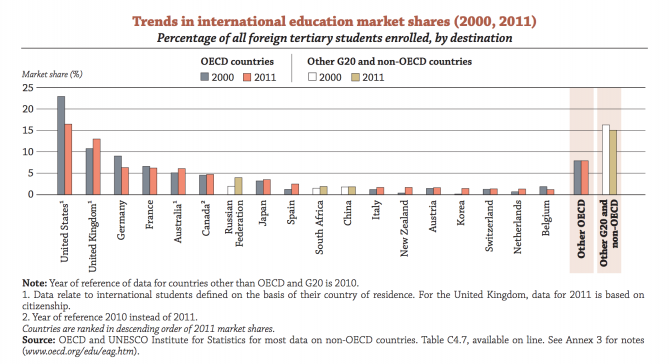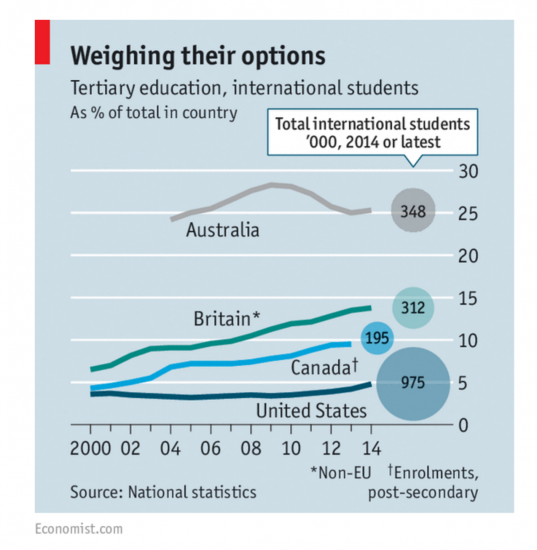The United States attracts more international students than any other country in the world. Yet, relative to our size, we are far from the lead, and, so far this century, the trend doesn’t look great. Other countries have a higher proportion of international students in their universities and are intentionally and successfully gaining market share. Much is at stake in this competition beyond the immediate economic benefit of additional tuition revenue and expenditures.
International students not only strengthen our universities but also make critical contributions to America’s science, innovation and economic competitiveness. Nearly 40 percent of the Nobel prizes in Chemistry, Medicine, and Physics won by American-based scientists since 2000 (and all six last year) have been awarded to immigrants. Half of billion-dollar startup companies in the US have had at least one immigrant founder. Immigrants to the US are at least twice as likely to start a business compared to native born persons. Seven of the ten world’s most valuable brands are from American companies founded by immigrants of the children of immigrants. Our universities are the main gateway for much of that foreign talent flowing into the U.S..
Even in the short term, international students have a positive economic impact in our universities and local communities. During 2015-16, they contributed over $32 billion to the US economy, which is double the amount of ten years prior, and supported over 400,000 US jobs–142,597 direct and 258,215 indirect. More than 70 percent of international students in the US primarily rely on personal or foreign government sources to finance their education.
 Research universities have expressed concerns about recent immigration policy changes (including the two versions of the travel ban for students of seven and then six predominantly Muslim countries) because of a general concern that these changes can significantly hinder our ability to attract the most talented students from around the world, as we saw happen with the immigration changes following the 9/11 attacks.
Research universities have expressed concerns about recent immigration policy changes (including the two versions of the travel ban for students of seven and then six predominantly Muslim countries) because of a general concern that these changes can significantly hinder our ability to attract the most talented students from around the world, as we saw happen with the immigration changes following the 9/11 attacks.
Between 2000 and 2011, the share of international students coming to the US declined from 23 percent to 17 percent, while the shares of students going to the United Kingdom, Australia, and Canada each increased. The US attracted over 1 million international students in the academic year 2015-16, which is greater than any other country yet represents less than 5 percent of the total number of students in the US. This inbound mobility rate has only grown by a single percentage point since 2000. Other Anglophone countries such as the United Kingdom, Australia, and Canada have much greater proportions of international students or have experienced more rapid growth.
The Economist reported last year how more and more countries are aggressively competing to attract international students. And not just in the English-speaking world. Japan is targeting an increase of 60% in the number of international students by 2020 and Malaysia is supposedly trying to double theirs by 2025.
While American universities continue to top the global charts in terms of academic reputation and scholarship, they do not lead the world in terms of internationalization. According to the Times Higher Education ranking of international universities, the US places 14th out of 22 countries, ranking below average in the proportion students from abroad. On average top 500 universities in the US have 14 percent of students from other countries, below the global average of 17 percent and well below other countries such as the UK (32 percent), Australia (26 percent), and Canada (18 percent).
American inventiveness and innovation has been the envy of the rest of the world for the last century in great part because of our ability to attract talent from around the world and our openness to new ideas. Let’s not forget how we got here!
